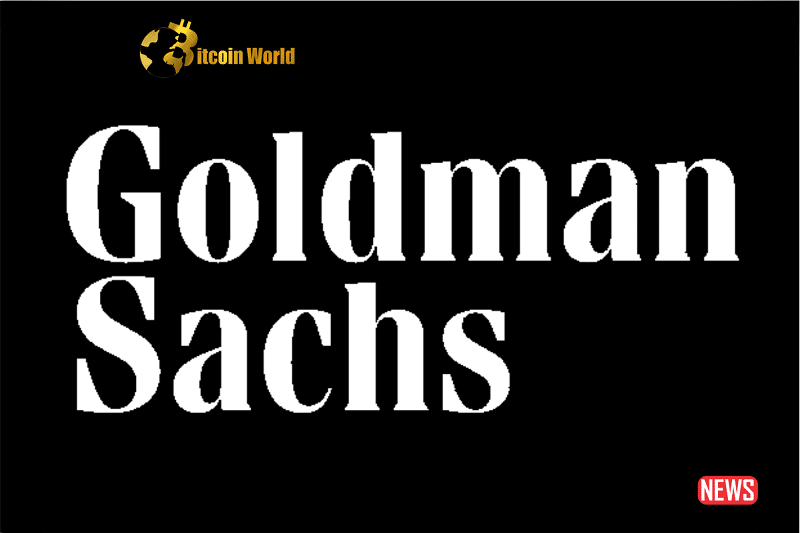Are you feeling optimistic about inflation finally taking a nosedive? While recent data might offer a glimmer of hope, the strategists at Goldman Sachs, led by their Chief Interest Rates Strategist Praveen Korapaty, are urging caution. They believe the market might be a tad too enthusiastic about how quickly inflation will cool down in the United States. Let’s dive into their perspective and understand why they’re urging a more measured outlook.
What’s Got Goldman Sachs Concerned About Inflation’s Descent?
The core of Goldman Sachs’ argument lies in the potential for the market to be overestimating the impact of a slowing economy on inflation. They highlight a few key areas where market optimism might be overlooking crucial factors:
- The ‘Sharp Slowdown’ Assumption: Many investors seem to be banking on a significant economic slowdown to rapidly bring down inflation. However, Goldman Sachs suggests this might not be enough to achieve the desired pace of disinflation.
- Energy Price Expectations: There’s a possibility that the market is factoring in a more pessimistic outlook for energy prices than what commodity futures currently indicate. While lower energy prices can certainly help curb inflation, relying solely on this might be risky.
- The Overlooked ‘Delayed-Onset Inflation’: This is a crucial point. Goldman Sachs points out that the market might be neglecting the potential for inflation to emerge with a delay in sectors like healthcare. This means we might not see the full inflationary picture right away.
The Fed’s Pause: A Sign of Victory or a Strategic Timeout?
The Federal Reserve recently decided to pause its aggressive interest rate hikes after ten consecutive increases. This move followed a report from the U.S. Bureau of Labor Statistics showing a decrease in inflation to 4% in May, the smallest 12-month increase since March 2021. That sounds like good news, right? While it is a positive development, it’s important to note that core inflation remains stubbornly high at 5.3%.
Here’s a quick look at the recent inflation trend:
| Month | Inflation Rate |
|---|---|
| Previous Reading | 4.9% |
| May | 4.0% |
| Core Inflation (May) | 5.3% |
Rate Cuts on the Horizon? Not So Fast, Says Powell
Many are anticipating the Federal Reserve to pivot and start cutting interest rates soon. However, Fed Chair Jerome Powell poured cold water on this expectation during a recent press conference. He emphasized that rate cuts are only likely to be considered when inflation has significantly decreased – a process he believes could take several years. This aligns with Goldman Sachs’ more cautious outlook.
Market Optimism vs. Goldman’s Measured View: What’s the Disconnect?
The current market sentiment seems to lean towards optimism regarding inflation’s trajectory. But Goldman Sachs’ analysis highlights a potential disconnect. Why the difference in perspective?
- Different Weighting of Factors: Goldman Sachs might be placing more emphasis on factors like persistent core inflation and the potential for delayed-onset inflation, while the market might be more focused on the recent headline inflation decrease.
- Assumptions about Economic Growth: The market’s expectation of a rapid decline in inflation could be tied to assumptions about a sharper economic slowdown than Goldman Sachs anticipates.
- Focus on Specific Sectors: Goldman Sachs’ focus on sectors like healthcare, where inflationary pressures might emerge later, provides a more nuanced view compared to a broader market assessment.
What Are the Potential Implications of This Divergence?
The differing views on inflation have significant implications for investors and the overall economy:
- Investment Strategies: If Goldman Sachs is correct, investment strategies based on a rapid decline in inflation might need to be re-evaluated. Sectors that are less sensitive to interest rate hikes might be more attractive.
- Monetary Policy: The Federal Reserve’s future actions will heavily depend on the actual pace of inflation decline. If inflation proves stickier than expected, further rate hikes might be necessary.
- Economic Growth: The battle against inflation can impact economic growth. Aggressive measures to curb inflation could potentially lead to a slowdown.
Actionable Insights: Navigating the Uncertain Inflation Landscape
So, what can we take away from Goldman Sachs’ warning?
- Stay Informed and Don’t Get Carried Away by Optimism: Keep a close eye on inflation data and various expert opinions, not just the prevailing market sentiment.
- Consider a Diversified Investment Approach: A well-diversified portfolio can help mitigate risks associated with unexpected inflation trends.
- Monitor Core Inflation: Pay attention to core inflation figures, as they provide a better indication of underlying price pressures.
- Be Prepared for Potential Volatility: Diverging opinions on inflation can lead to market volatility. Be prepared for potential shifts in the economic landscape.
In Conclusion: A Measured Approach to Inflation Expectations
Goldman Sachs’ cautionary note serves as a crucial reminder that the fight against inflation might be a marathon, not a sprint. While the recent dip in headline inflation is encouraging, it’s essential to consider the potential for a slower cooling process, as highlighted by Praveen Korapaty and his team. By understanding the nuances of inflation dynamics and the factors that could lead to a more protracted decline, investors and policymakers can make more informed decisions, navigating the economic landscape with a more realistic and measured perspective. The key takeaway? Don’t underestimate the potential for inflation to stick around a bit longer than anticipated.
Disclaimer: The information provided is not trading advice, Bitcoinworld.co.in holds no liability for any investments made based on the information provided on this page. We strongly recommend independent research and/or consultation with a qualified professional before making any investment decisions.


